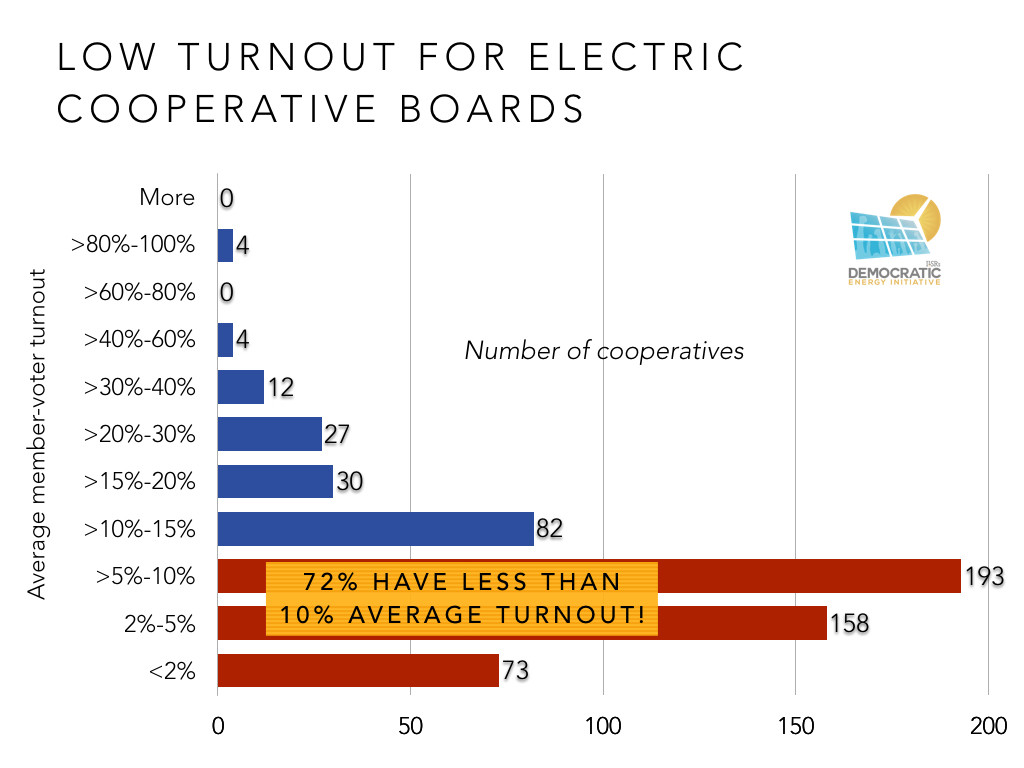Presentation: Re-Member-ing the Electric Cooperative
Originally published at ilsr.org.
![]() In March of 2016, we published a report on the state of rural electric cooperatives in the current electricity market: Re-Member-ing the Electric Cooperative. Below you will find our newly developed presentation based on this report. Forward and share widely.
In March of 2016, we published a report on the state of rural electric cooperatives in the current electricity market: Re-Member-ing the Electric Cooperative. Below you will find our newly developed presentation based on this report. Forward and share widely.
Executive Summary
Electric cooperatives face diverse challenges, from their power sources to member engagement. This report details those challenges and the tools that cooperatives are using to overcome them.
The Challenges
 Tied to Coal Power
Tied to Coal Power
Coal accounts for about 75% of energy generated by electric cooperatives, compared to just 32% for the United States’ entire electricity sector (U.S. Energy Information Administration, 2016).
Captured in Long-Term Contracts
Contracts with electricity suppliers extend for decades, sometimes past 2050, trapping locally-based electric cooperatives into increasingly expensive distant power plants and fossil fuel sources, while forbidding them from buying outside energy.
Losing Member-Owners.
Electric cooperative members have a right to vote for their boards of directors. But 70% of cooperatives have less than a 10% voter turnout, increasing the disconnection between the cooperative and its members.
The Solutions
Fortunately, the solutions lie in the best of the cooperative movement.
Finding Ways Out of Coal Power
A new ruling from the U.S. Federal Energy Regulatory Commission may allow electric cooperatives to purchase local power outside their contractual obligations, providing a novel level of flexibility for most cooperatives.
Using Clean Energy and On-Bill Financing
Electric cooperatives are finding new ways to enable energy savings for member-owners. They’re leaders in experimenting with community solar. A few are supporting the highest penetrations of rooftop solar in the nation. They’re creating cost-effective on-bill financing programs that help members save energy and money.
And Empowering Member-Owners
The member-owners of Pedernales Electric Cooperative, Beartooth Electric Cooperative, Jackson Energy Cooperative, and many others have made their cooperatives more accessible, more dedicated to renewable energy and energy efficiency, and more democratic than ever.
Cooperatives may face their greatest challenge since the inception of rural electrification in the 1930s, but with their members, they have the power to overcome.
For timely updates, follow John Farrell on Twitter or get the Energy Democracy weekly update.
Have a tip for CleanTechnica? Want to advertise? Want to suggest a guest for our CleanTech Talk podcast? Contact us here.
Latest CleanTechnica.TV Video

CleanTechnica uses affiliate links. See our policy here.

